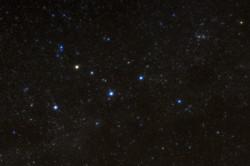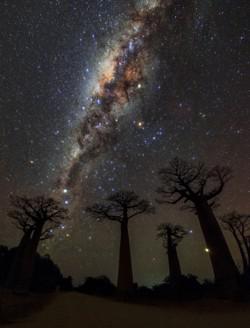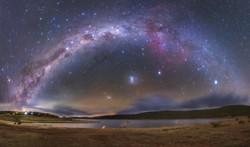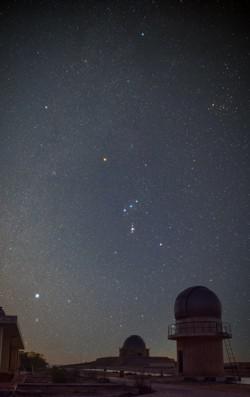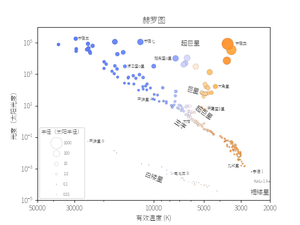Glossary term: 颜色
Description: 天体的颜色可以提供有关其物理特性的重要信息。即使用肉眼观察,你在天空中看到的偏蓝色的恒星(例如位于北斗七星“勺柄”末端的摇光星)也会比偏红色的恒星(例如位于猎户座肩部的参宿四星)热得多。为了量化颜色,天文学家通常使用可选的几种专用蓝色滤光片之一观测恒星的亮度,并将其与通过红色滤光片观测的亮度进行比较。通过比较不同的特定滤光片观测到的亮度,即可给出颜色的明确定义。目前有几种这样的定义处于应用中。其结果可用于统计分析。例如,颜色-星等图的两条轴线就分别是天体颜色与天体亮度。
Related Terms:
See this term in other languages
Term and definition status: The original definition of this term in English have been approved by a research astronomer and a teacher The translation of this term and its definition is still awaiting approval
The OAE Multilingual Glossary is a project of the IAU Office of Astronomy for Education (OAE) in collaboration with the IAU Office of Astronomy Outreach (OAO). The terms and definitions were chosen, written and reviewed by a collective effort from the OAE, the OAE Centers and Nodes, the OAE National Astronomy Education Coordinators (NAECs) and other volunteers. You can find a full list of credits here. All glossary terms and their definitions are released under a Creative Commons CC BY-4.0 license and should be credited to "IAU OAE".
If you notice a factual or translation error in this glossary term or definition then please get in touch.
Related Media
蝙蝠星语
Credit: Thanakrit Santikunaporn/IAU OAE
License: CC-BY-4.0 Creative Commons 署名 4.0 国际 (CC BY 4.0) icons
猴面包树大道上空的银河
Credit: Amirreza Kamkar/IAU OAU
License: CC-BY-4.0 Creative Commons 署名 4.0 国际 (CC BY 4.0) icons
星空下的瞭望塔和稻田
Credit: Likai Lin/IAU OAU
License: CC-BY-4.0 Creative Commons 署名 4.0 国际 (CC BY 4.0) icons
安格勒斯里奇上空的银河(Anglers Reach为澳大利亚新南威尔士州雪山地区的小镇,直译可为"垂钓者之域")
Credit: Lucy Yunxi Hu/IAU OAU
License: CC-BY-4.0 Creative Commons 署名 4.0 国际 (CC BY 4.0) icons
冬季星座
Credit: Mohamed Aboushelib/IAU OAE
License: CC-BY-4.0 Creative Commons 署名 4.0 国际 (CC BY 4.0) icons
Related Diagrams
赫罗图
Credit: IAU OAE/Niall Deacon
License: CC-BY-4.0 Creative Commons 署名 4.0 国际 (CC BY 4.0) icons
Related Activities
Reading the Rainbow
astroEDU educational activity (links to astroEDU website) Description: By understanding how rainbows work, you can discover about light and its properties, learning about stars, nebulae, galaxies, and our Universe.
License: CC-BY-4.0 Creative Commons 署名 4.0 国际 (CC BY 4.0) icons
Age Ranges:
14-16
, 16-19
, 19+
Education Level:
Informal
, Middle School
, Secondary
, University
Areas of Learning:
Interactive Lecture
, Observation based
, Social Research
Costs:
Low Cost
Duration:
1 hour 30 mins
Group Size:
Group
Skills:
Analysing and interpreting data
, Asking questions
, Engaging in argument from evidence
